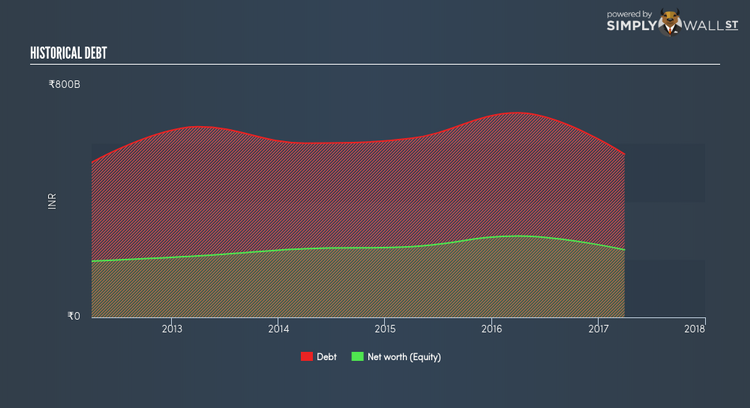What You Should Know About IDBI Bank Limited’s (NSE:IDBI) Liquidity

As a small-cap finance stock with a market capitalisation of ₹201.99B, the risk and profitability of IDBI Bank Limited (NSEI:IDBI) are largely tied to the underlying economic growth of the region it operates in IN. Since banks make money by reinvesting its customers’ deposits in the form of loans, strong economic growth will drive the level of savings deposits and demand for loans, directly impacting the cash flows of those banks. Following the Financial Crisis in 2008, a set of reforms termed Basel III was enforced to bolster risk management, regulation, and supervision in the financial services industry. These reforms target bank level regulation and aims to improve the banking sector’s ability to absorb shocks arising from economic stress which could expose financial institutions to vulnerabilities. Its financial position may weaken in an adverse macro event such as political instability which is why it is crucial to understand how well the bank manages its risks. Sufficient liquidity and low levels of leverage could place the bank in a safe place in case of unexpected macro headwinds. Today we will be measuring IDBI Bank’s financial risk position by looking at three leverage and liquidity metrics. Check out our latest analysis for IDBI Bank
Why Does IDBI’s Leverage Matter?
Banks with low leverage are exposed to lower risks around their ability to repay debt. A bank’s leverage can be thought of as the amount of assets it holds compared to its own shareholders’ funds. While financial companies will always have some leverage for a sufficient capital buffer, IDBI Bank’s leverage ratio of 16x is very safe and substantially below the maximum limit of 20x. This means the bank has a sensibly high level of equity compared to the level of debt it has taken on to maintain operations which places it in a strong position to pay back its debt in unforeseen circumstances. If the bank needs to increase its debt levels to firm up its capital cushion, there is plenty of headroom to do so without deteriorating its financial position.
How Should We Measure IDBI’s Liquidity?

As I eluded to above, loans are relatively illiquid. It’s helpful to understand how much of this illiquid asset makes up the bank’s total asset. Usually, they should not be higher than 70% of total assets, which is consistent with IDBI Bank’s state given its ratio of 52.66%. This is a reasonable ratio and suggests that slightly over half of the bank’s total assets are tied up in the form of illiquid loans, striking an appropriate balance between liquidity and interest income.
Does IDBI Have Liquidity Mismatch?
IDBI profits by lending out its customers’ deposits as loans and charge an interest on the principle. These loans may be fixed term and often cannot be readily realized, conversely, on the liability side, customer deposits must be paid in very short notice and on-demand. The discrepancy between loan assets and deposit liabilities threatens the bank’s financial position. If an adverse event occurs, it may not be well-placed to repay its depositors immediately. Since IDBI Bank’s loan to deposit ratio of 71.14% is within the sensible margin, below than the appropriate maximum of 90%, this level places the bank in a relatively safe liquidity position given it has not excessively lent out its deposits and has maintained a suitable level for compliance.
Next Steps:
IDBI Bank ticks all the boxes for operational prudency in terms of liquidity and leverage. These factors often sideline next to other fundamentals but are equally important to consider as part of the investment thesis. The bank’s favourable liquidity and leverage position exposes it to less risk when it comes to repaying financial obligations, in particular, in the case of an adverse macro event. Keep in mind that a stock investment requires research on more than just its operational side. Below, I’ve compiled three relevant aspects you should further research:
Historical Performance: What has IDBI’s returns been like over the past? Go into more detail in the past track record analysis and take a look at the free visual representations of our analysis for more clarity.
Management Team: An experienced management team on the helm increases our confidence in the business – take a look at who sits on IDBI Bank’s board and the CEO’s back ground.
Other High-Performing Stocks: Are there other stocks that provide better prospects with proven track records? Explore our free list of these great stocks here.
To help readers see pass the short term volatility of the financial market, we aim to bring you a long-term focused research analysis purely driven by fundamental data. Note that our analysis does not factor in the latest price sensitive company announcements.
The author is an independent contributor and at the time of publication had no position in the stocks mentioned.

